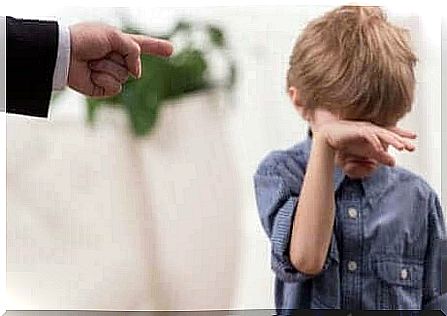Everything You Need To Know About ADHD (Attention Deficit Hyperactivity Disorder)

As the name suggests, ADHD (Attention Deficit Hyperactivity Disorder) is a neurobiological disorder that manifests itself during childhood. In total, it affects more than 5% of children worldwide. In addition, it is more common in boys than in girls.
Fortunately, studies have shown that the disorder can respond well to an early diagnosis and proper treatment. Let’s learn more about this disorder!
ADHD (Attention Deficit Hyperactivity Disorder)
Causes
Due to the complexity of this disorder, no single cause has been identified. It is mainly a heterogeneous disorder with several subtypes that are the result of various risk factors.
Professionals do not know exactly what causes it. However, they have discovered that genetic and environmental factors have a major influence on development. In this case, we are talking about prenatal, perinatal and postnatal factors.
Furthermore, ADHD has a heritability of 76%. This means that on average 76% of the factors associated with the disorder are related to genes, and the rest to non-genetic factors.
Finally, it has been shown that relatives of people with this neurological disorder have a five times greater risk of developing it than those who do not have a family history of this condition.
Symptoms

It is typical for children suffering from ADHD to have poor results at school and socially.
Essentially, this disorder has three core symptoms: inattention, hyperactivity and impulsivity. These symptoms manifest themselves to a greater or lesser degree depending on the subtype.
- First, in the predominantly inattentive subtype, most symptoms fall under inattention. It is most common in women and affects a person strongly professionally.
- On the other hand, children with the predominantly hyperactive-impulsive subtype may be more hyperactive and aggressive.
- The latter subtype, known as combined, is the most common. It has an impact on overall performance.
Furthermore, in order for the symptoms of inattention, hyperactivity and impulsivity to be associated with ADHD, certain conditions must be met :
- The symptoms must first manifest themselves before the age of seven.
- In addition, the child must show them continuously for at least six months.
- In addition, the symptoms should affect your child in at least two different environments.
- Finally, these symptoms must make your child’s life significantly more difficult. Therefore, it affects their performance.
How can ADHD be treated?
First, psychological therapy helps to control the symptoms of this disorder and improve the child’s performance.
However, ADHD in children and adolescents should be treated according to the needs of each individual patient. There is still no cure for this disorder. Therefore, the treatment aims to improve the symptoms and reduce the risk of other associated disorders.
Usually, professionals recommend combination therapy for children and adolescents if ADHD moderately or severely affects their daily lives. This includes behavioral, pharmacological and psychological treatment and psychopedagogical intervention.
1. Psychological treatment

Overall, the psychological interventions that have yielded good results are based on the principles of cognitive behavioral therapy.
These include:
- Behavioral therapy
- Parental education
- Cognitive therapy
- Social skills training
2. Psychopedagogical treatment
Then, psycho-pedagogical intervention is a fundamental pillar of combined treatment.
Basically, this involves a number of interventions. These range from improving the child’s academic performance to improving the school environment.
3. Pharmacological treatment
Thereafter, pharmacological treatment helps to reduce the core symptoms of ADHD. Overall, this can lead to improved academic performance and behavior.
At the same time, it enhances the effect of psychological and psychoeducational interventions. Methylphenidate, which is a stimulant, is a popular drug that doctors prescribe to treat this disorder.
The reality of ADHD

This disorder can affect a child’s self-esteem.
This condition is common. The reality, however, is that there is widespread ignorance surrounding it.
Unfortunately, very few people are well informed about this disorder. In addition, many others mistakenly believe that ADHD (Attention Deficit Hyperactivity Disorder) is caused by a disorganized family or school environment.
Not having enough information about this disorder has direct consequences for patients and their families, friends and the other people around them. Misinformation or lack of information leads to stigma, insensitivity and lack of consideration for the disorder.









